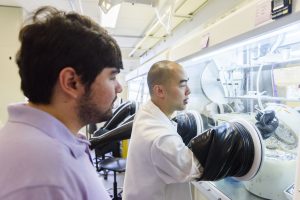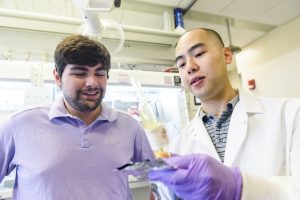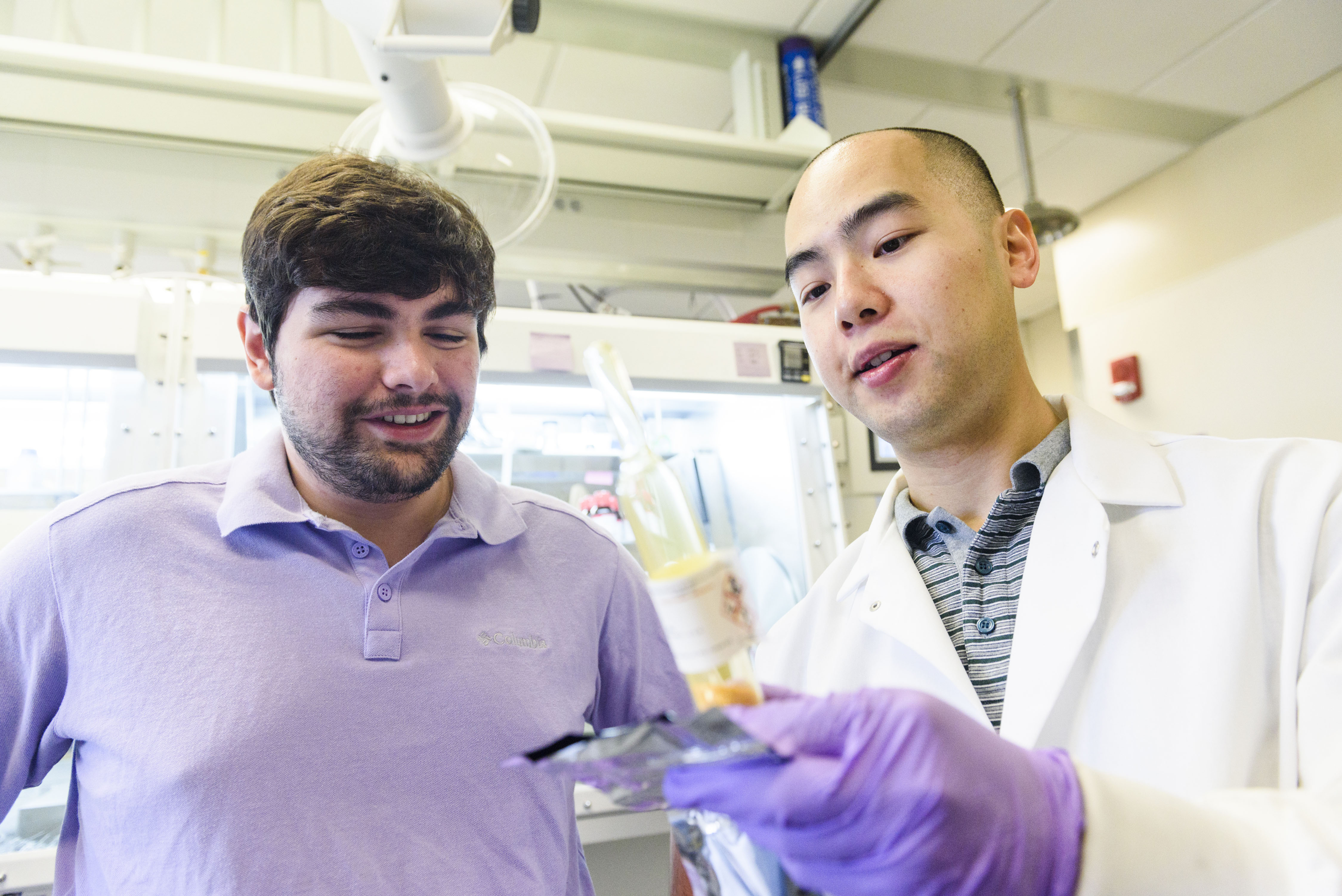
TUSCALOOSA, Ala. – Technology developed at The University of Alabama aimed at producing inexpensive, flexible thin-film solar cells for military applications has been selected for a national business start-up contest.
A UA business team is one of 10 teams focused on environmentally friendly technology competing for $50,000 and other opportunities as part of MegaWatt Ventures, an annual clean energy business plan competition sponsored by the U.S. Department of Energy’s Cleantech University Prize, or Cleantech UP, and the University of Central Florida.
The competition encourages moving innovative, clean technologies from the lab bench into the marketplace. Many of the winning teams are spin-offs from university research labs, and teams must be composed primarily of current university students. The student-led ventures are in five states around the country and represent a wide range of technologies.
Two UA engineering students will pitch the technology in front of venture capitalists, entrepreneurs, renewable energy veterans and Fortune 1000 company technology scouts on Friday, June 9, in Orlando, Florida.
The UA business team, called NextPrinted Solar, includes Andrew Hanebuth, an undergraduate student from Madison, Mississippi, studying chemical engineering; and Zhongliang “Ben” Ouyang, a graduate student in electrical engineering from Wuhan, China. They are advancing technology being developed in the lab of Dr. Dawen Li, associate professor of electrical and computer engineering.
“This team has shown that startups from The University of Alabama can compete against top teams from around the nation, which reflects on the outstanding innovation and research capabilities of the department of electrical and computer engineering,” said Dr. Rachel Frazier, assistant director of the Alabama Innovation and Mentoring of Entrepreneurs Center, or AIME.
NextPrinted Solar won the Crimson Innovation start-up contest on campus in April as part of AIME Day, an annual showcase of technologies and business plan competitions. AIME, part of UA’s Office of the Vice President for Research and Economic Development, focuses on growing concepts from UA researchers and creating testable prototypes to demonstrate the value the ideas bring to the marketplace.
Li’s lab is developing a type of perovskite solar cell made of mix of organic material and a metal that can be printed onto a base material, or substrate, similar to ink printing on paper. The lightweight solar cells should be able to harvest about 15 percent of the sun’s energy, better than many existing low-cost, thin-film solar cells.
These high-performance printed flexible solar panels are considerably lighter and fully flexible compared to rigid traditional silicon-based solar cells, requiring far less space for transport and storage. They should cost less to manufacture than more efficient thin-film solar cells since they could be produced in an ambient environment — such as how a newspaper is printed in an open-air printing press.
The cells developed at UA have been demonstrated in the lab to be more stable than existing perovskite solar cells, which is a growing area of research and commercialization.
“We’re alone in the perfect spot in the market – inexpensive with high efficiency,” Hanebuth said. “Our quick manufacturing technology coupled with such high efficiency and the ability to be so flexible is an advantage. These cells can be rolled up and stored a lot easier, and you can retrofit them on top of whatever you want.”

The initial market is the U.S. military, which consumes a lot of energy at remote, field-operated military facilities called forward operating bases. These typically are powered by electric generators that run off diesel fuel, but some also use rigid solar panels that are bulky to transport and take up space at the base.
With the electricity generation from solar cells, the demand for diesel fuel can be significantly reduced, cutting the energy distribution cost and lessening the threat of energy supply disruptions. In addition, the decreased oil dependency can also reduce the risk associated with the transportation of fuel.
NextPrinted Solar’s flexible and durable perovskite solar cells could be laid on top of the base’s tents, for instance, without weighing them down and generating enough electricity to power significant operations, including an air conditioner, Hanebuth said.
The winning team from Megawatt Ventures will receive $50,000. The top three teams will be invited to compete in the national Cleantech UP finals, hosted by VentureWell, in Austin, Texas, on June 26-27 for an opportunity to win an additional $50,000.
This is the fifth year for the Megawatt Ventures competition. Megawatt Ventures has received approximately 200 applications and awarded $650,000 in prizes to promising university based cleantech companies. Previous applications have raised more than $4 million in follow-on funding, including one previous participant who was recently acquired.
Contact
Adam Jones, UA Media Relations, 205/348-4328, adam.jones@ua.edu
